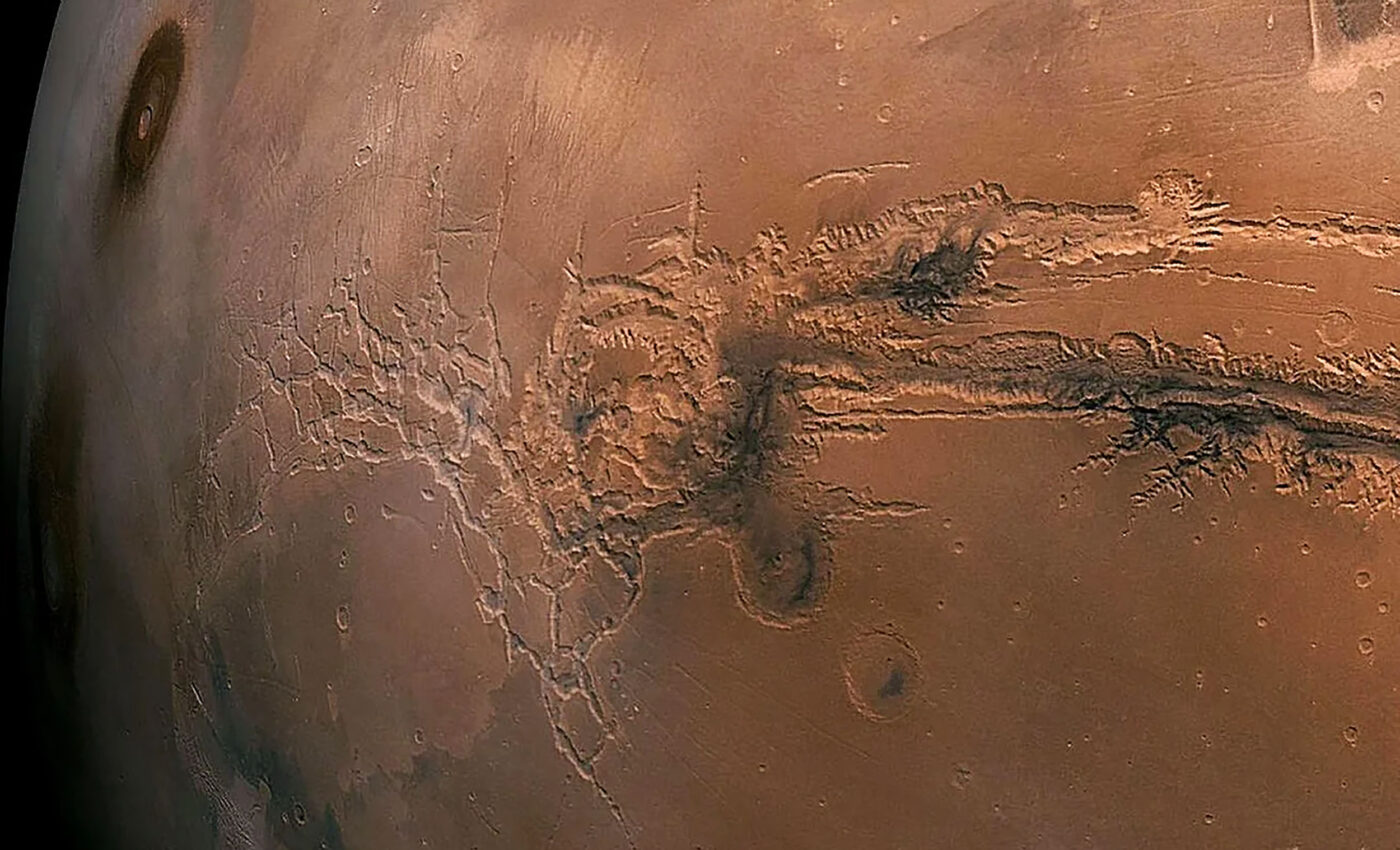
Massive 'Noctis Volcano' and a buried glacier discovered on Mars
Scientists have unearthed the existence of a colossal volcano, provisionally named the Noctis Volcano, alongside a potential buried glacier within the eastern part of Mars’ Tharsis volcanic province, near the equator.
This discovery, previously overlooked due to significant erosion, has been hidden in one of the most iconic Martian regions, at the juncture of the Noctis Labyrinthus and the Valles Marineris canyons.
Fire meets ice and shapes the Martian landscape
The Noctis Volcano stands at an impressive 29,600 feet in elevation and stretches over 280 miles in width. Its vast size and intricate history of modifications suggest a long period of activity, hinting at Mars’ complex geological evolution.
The southeast part of the volcano harbors a recent thin volcanic layer beneath which glacier ice likely remains, marking an exciting new chapter in the study of Mars.
Dr. Pascal Lee, a planetary scientist with the SETI Institute and the Mars Institute based at NASA Ames Research Center, and lead author of the study, shares his experience, saying, “We were examining the geology of an area where we had found the remains of a glacier last year when we realized we were inside a huge and deeply eroded volcano.”
Deciphering the Noctis Volcano’s magnitude
Sourabh Shubham, a graduate student at the University of Maryland’s Department of Geology and the study’s co-author, said, “This area of Mars is known to have a wide variety of hydrated minerals spanning a long stretch of Martian history.”
“A volcanic setting for these minerals had long been suspected. So, it may not be too surprising to find a volcano here. In some sense, this large volcano is a long-sought ‘smoking gun’”, she continued.
Further exploration within the volcano’s perimeter revealed a 1930 square mile area filled with volcanic deposits characterized by unique, blister-like mounds.
These formations, known as “rootless cones,” are believed to result from explosive steam venting, suggesting interaction between volcanic materials and underlying ice or water sources.
Clues from the crater: The science behind the scenes
A significant find from the previous year by Lee, Shubham, and colleague John W. Schutt was the identification of a “relict glacier” through a large erosional opening, containing a light-toned deposit of sulfate salt with glacial traits.
This discovery, alongside the identification of breached rootless cones with similar polyhydrated sulfates, bolsters the theory that a vast glacier might still be preserved beneath the volcanic surface.
The study highlights the Noctis Volcano’s lengthy and complex history, shaped by fracturing, thermal erosion, and glacial activity.
Enduring secrets from unchartered territory
This layered volcanic shield, comprised of pyroclastic materials, lavas, and ice, reveals the dynamic interplay between the Martian surface and its subsurface forces, offering clues to the planet’s geologic and climatic past.
Yet, many questions about the Noctis Volcano remain unanswered, including its exact age, the timing of its eruptions, and whether it could still be active today. The potential for sustained warmth and water from ice raises intriguing possibilities about the volcano’s capacity to support life.
Dr. Lee emphasizes the unique appeal of the Noctis Volcano for future exploration. “It’s really a combination of things that makes the Noctis volcano site exceptionally exciting. It’s an ancient and long-lived volcano. It has also had a long history of heat interacting with water and ice, which makes it a prime location for astrobiology and our search for signs of life,” Dr. Lee explained.
Noctis Volcano and the history of Mars
The discovery of the Noctis Volcano and its possible glacial companion offers a new lens through which to view Mars’ geological evolution and opens up promising doors for the search for life and the planning of future robotic and human missions.
The presence of glacier ice near the equator presents a less harsh environment for exploration, potentially unlocking new strategies for sustaining human presence on Mars through the extraction of water for hydration and rocket fuel production.
This groundbreaking find underscores the dynamic and continually evolving nature of Mars, inviting us to delve deeper into its mysteries with each new discovery.
The full study was published by the USRA.
—–
Like what you read? Subscribe to our newsletter for engaging articles, exclusive content, and the latest updates.
Check us out on EarthSnap, a free app brought to you by Eric Ralls and Earth.com.
—–













